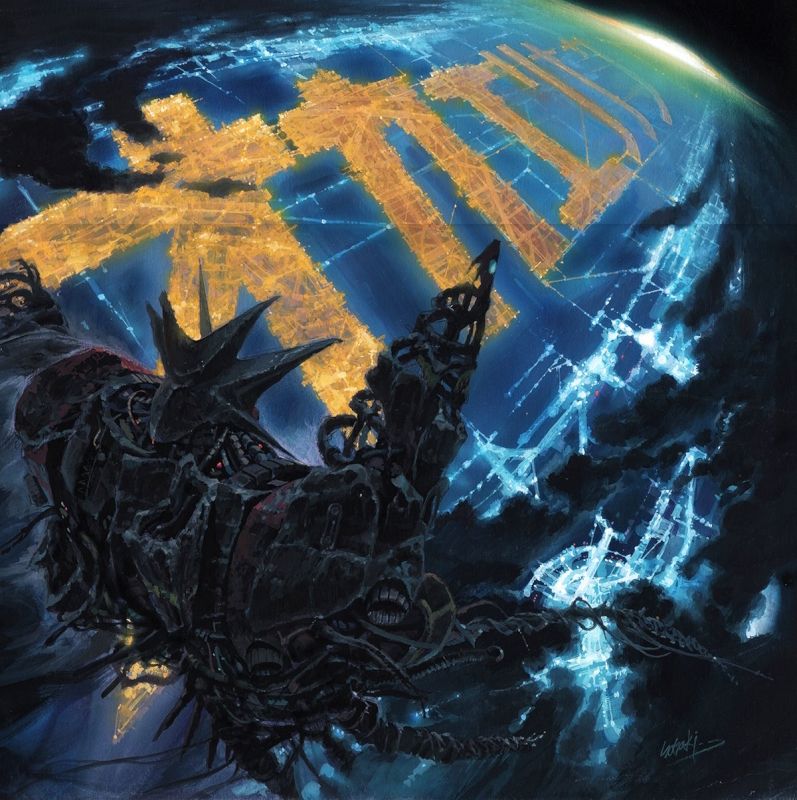Why Gunbuster has one of the best anime endings ever
Here be spoilers.
I’m not doing a deep dive into the whole show here, because better minds than mine (I’m looking at you, Jonathan Clements, and I recommend anyone reading this to check out his articles too) can explain its place in the pop culture landscape that it was made in (and for), and its value as an artefact of TV history. What makes the series special for me is the way it that moves beyond cheeky pastiche made by nerds, for nerds, and succeeds on its own merits as great character-driven SF.
The “Gainax Ending” is enough of A Thing to warrant its own TV Tropes page, but ironically the conclusion of the studio’s first major success is considered memorable by viewers for all the right reasons. It elicits a visceral, in-the-moment reaction, but what I found surprising was how it impressed me even more when I sat back and reflected on it at length.
The decision to make the final episode look more “cinematic” with black-and-white photography right up until the last few seconds was a bold one, but it’s a clever reversal of the traditional “fade-out” that draws attention to the closing shot before the credits roll. On the simplest and most obvious level, it’s a callback to Jung’s final conversation with Noriko and Kazumi and depicts a happy ending where the mission is shown – according to the title cards, a very long time afterwards – to have succeeded.
Then I started to ask myself about what the details of this meant.

The implication is that civilisation has not only survived, but still remembers the act of selfless heroism that occurred thousands(!) of years previously. Somehow, Jung was able to ensure that her final promise was kept, even far beyond her own lifetime. She was a rival who became a friend, initially motivated by egotistical self-interest but went on to make a thoughtful gesture on the largest and longest scale possible. And subsequent generations agreed that it was still worth making.
The misspelling in the message suggests that human language had changed over the intervening years, so the specific meaning – in the sense of what the individual katakana characters represent – may have been lost. Either that, or (according to one viewer’s opinion I encountered on Reddit) it was a spelling mistake on Jung’s part, which makes it all the more personal.
There must have been some long-term planning and maintenance however, because the lights powered up on cue and were visible to the people intended to see them. Perhaps technology advanced to the point where such a thing is easy to accomplish, but the fact remains that it still happened at just the right time, which would require knowledge of why and when it needed to happen. To some degree or other, people remembered *something* about them being out there after all that time, still cared, and retained the belief or hope that they’d return someday.
This implies the continued existence of a society that values gratitude, togetherness and love of planet Earth: a society that shares the same values as Kazumi and Noriko, which had brought them to the point where they were willing to risk their lives. I can’t think of a way in which the message could have been preserved without those three things: without gratitude, people wouldn’t have thought that it was important; without togetherness, such a physically large message could not have been arranged, nor could civilisation sustain itself; without love of the planet that was saved, there’d be no “home” to return to.
All this is in stark contrast to another moment that mirrors its counterpart from the first episode: before the final mission, Takami sends Noriko one of those neat little holographic video clips, which is a more futuristic-looking version of a similar video that Noriko had sent to her father and was in his possession during his tragic final moments. In both cases, they represent a promise that the message’s recipient is unable to keep.
Amidst the losses of life, destruction of entire planets, personal sacrifices and the pitiless separation from loved ones by time and space, the series still manages to end on a happy note, where the heroes survive to see a world that reciprocates the feelings that they held dear. It’s one of those “greater than the sum of its parts” cases where a goofy, playful and derivative premise finds genuine pathos and meaning in its storytelling. Even some of my favourite pieces of television don’t manage to stick the landing; Gunbuster IS one of my favourite pieces of television, but it also manages to deliver one of the most emotionally powerful final scenes that I’ve had the pleasure of seeing. The more I think about it, the better it gets.
